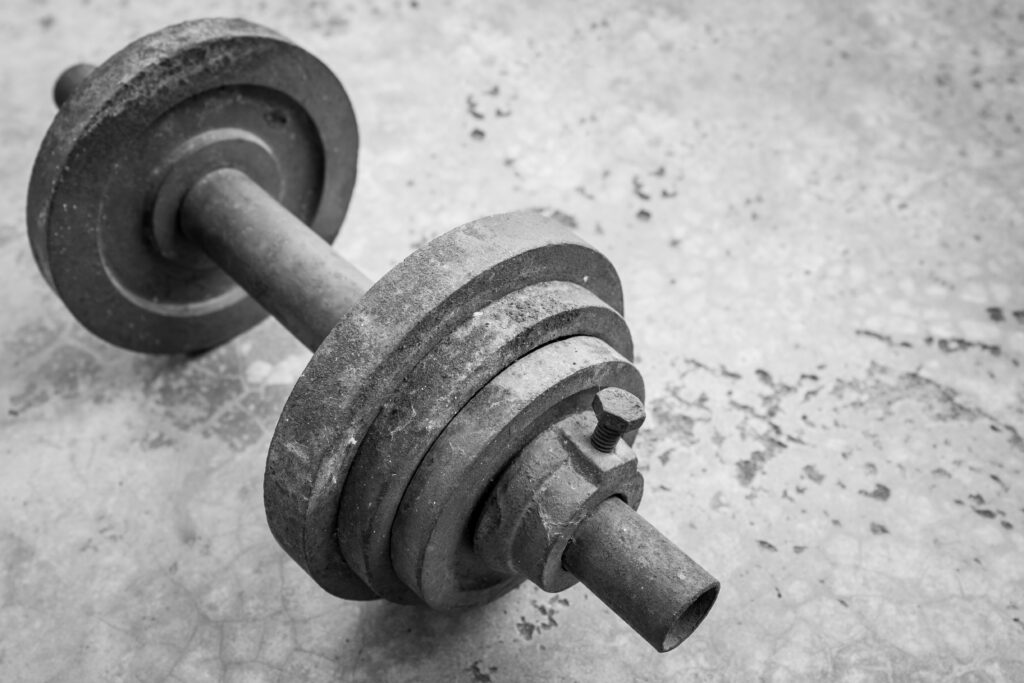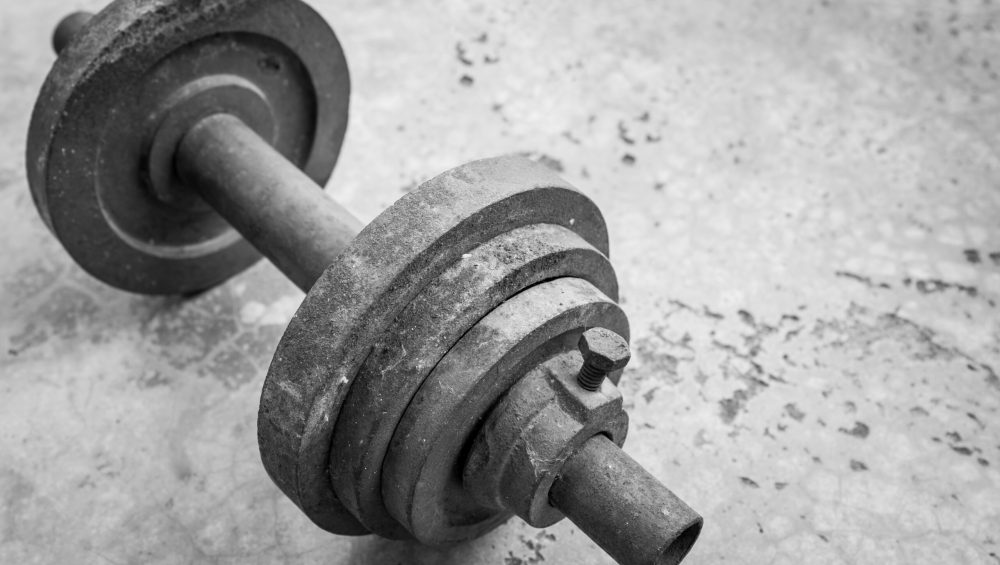Before you move on, I wanted to let you know that Dean Somerset and I have just put our flagship product, the Complete Shoulder & Hip Blueprint, on sale this week.
You can purchase both CSHB 1.0 and CSHB 2.0 separately this week at 30% off the regular price using the coupon code EVOLVE at checkout.
Or you can purchase the bundle pack HERE which gives you the greatest value.1
WU-TANG!

Getting Strong(er) is Corrective
“Oh, I forgot to tell you…my previous trainer said I have a winged scapula, my left hip is a bit internally rotated, and that my posture isn’t great.”
This was less than five minutes into an initial assessment with a new client and it took everything I had to prevent my eyeballs from rolling out of their sockets. The snarky side of me wanted to say something like, “Oh my god, yes, I totally see it. Did (s)he also mention how your left ear is lower than the right? That’s messed up. We need to fix that.”
But I didn’t.
Nope, all I did was sit there, nod my head, listen intently, and kept repeating to myself “don’t stab yourself with this pen, don’t stab yourself with this pen, no, Tony, NO!”
People Think They’re Broken
It never ceases to amaze me how some people will harp on the most inane things when it comes to their body and performance and then regale me with stories of how their previous coach or trainer was a “corrective exercise specialist.”
I won’t invalidate their stories or experiences, of course, but it’s hard for me to listen to sometimes.
They’ll outline their “training” for the past few months (if not years), and it’s rife with positional breathing drills (which, for the record, I’m a fan of), postural stretches, and describe a foam rolling series that rivals the length of a Ken Burns’ documentary.
I’ll follow with “So, did you actually ever follow a strength training program consistently?”
“Yeah, sure, we did a bunch of corrective exercises and, after 19 weeks, we finally worked up to a bodyweight squat. I still have to work on my big toe dorsiflexion, though. Fingers crossed I can improve that by December.”
Me…
As an industry – and I’ll call myself out on this too (particularly early in my career) – we’ve done a splendid job at helping people feel like a bunch of walking balls of fail:
- Your shoulders and upper back are too rounded.
- Yikes, your pelvis is anteriorly tilted.
- Oh…my…god…we need to work on your scapular upward rotation.
- Shit, your FABER screen tested positive. How are you able to walk?
- Also, FYI: you have Chlamydia.
It doesn’t surprise me in the least why so many people walk around thinking they’re fragile snowflakes who need to correct or “fix” everything before they do any appreciable training.
It’s our fault.
Strength coaches, personal trainers, physical therapists, athletic trainers, sherpas, we’re all culpable.
We can and need to do better.
And it starts with re-acquainting ourselves with what our main role as fitness professionals actually is…
…to elicit a training effect with our clients/athletes.
Again…Getting Strong(er) is Corrective
I say this with a grain of salt because “strong” is subjective, and can mean different things to different people.
- Being able to deadlift 2x bodyweight is strong.
- Being able to perform 15 pull-ups is strong.
- Walking from Trader Joe’s to your apartment without putting down the bags is strong.
- The ability to pull off wearing white after Labor Day is strong.
- Doing whatever it is Cirque du Soleil performers can do is strong.
However, since I’m a little biased “getting stronger” in this sense – and more cogent to the conversation – refers to TRAINING.
I.e., lifting heavy things.
Unfortunately, many people have been led to believe lifting weights is dangerous. It seems you can’t go more than three clicks on the internet (or investigate certain certifications available) before being told barbells, dumbbells, machines, kettlebells, squats, deadlifts, high-reps, low-reps, and/or kittens are dangerous.

And just to set the record straight, and to push back with all my will to those people (worst of all, doctors, PT’s, etc) who keep spreading the message that strength training is dangerous (particularly when addressing a current injury)…
…I give you the LAWS of Loading:
Wolff’s Law – Bones will adapt to loads under which it is placed
Davis’s Law – Soft tissue will heal according to the manner which they are mechanically stressed.
For the “you only have one back” guy…is this then not why we train?2 Squats and deadlifts, when properly loaded and progressed, will do far more good for someone’s recovery from injury than most alternatives.
I hate the “everything makes you dysfunctional or causes dysfunction” crowd.
To which I say…the fuck outta here.
My friend Bret Contreras has the perfect antithesis to this faulty mindset:
“If you think lifting weights is dangerous, try being weak. Being weak is dangerous.”
And this is why I’m a firm ambassador in encouraging people to get strong(er), or more to the point, helping them figure out their “trainable menu.”3
Rather than pointing out everything that’s wrong with someone, I’d rather use the initial assessment (and subsequent training sessions) to highlight what they can do.
Lets use the classic example of someone who has “computer guy” posture. I.e., rounded shoulders, forward head posture, an affinity for pens.
When someone walks in exhibiting this posture a lot of trainers will write down a laundry list of stretches, thoracic (mid-back) mobility drills, and other “corrective” exercises to do.
Well, first, some will go out of their way to make the person feel like Cersei Lannister during her walk of shame.
Shame, shame, shame….
And then, you know…lets get corrective, son!
They’re not wrong to do so.
I’m not opposed to utilizing corrective modalities to address postural deficits or mobility restrictions.
But I find when these sort of things are accentuated and serve as the “meat-n-potatoes” of a training program, it often sets people up for failure; they become more fixated on perfection at the expense of progress.
And lets be honest: NO ONE gets jazzed-up at the gym to do more T-spine extension drills.
I don’t want my clients to feel like a perpetual patient.
I want them to train, because training tends to be more palatable than Scapular Wall Slides. It helps people stay on task and not bored to tears.
And on that note, wanna know an excellent drill that helps nudge people into a bit more thoracic extension?
Kipping pull-ups.
FRONT SQUATS.
As you descend closer to the ground you have to “fight” to keep from folding over. In many ways the proper execution of the exercise itself is self-coaching; or dare I say, corrective.
If you don’t maintain thoracic extension the barbell rolls off your shoulders.
I may come across as the cantankerous strength coach in saying this, but I find more value in having my clients train – in a way that emphatically demonstrates success to them (by matching the programming to their goals and ability level) – than to corrective exercise them to death.
Get your clients strong(er).
Show them what they can do.
And for the love of god get them training.



